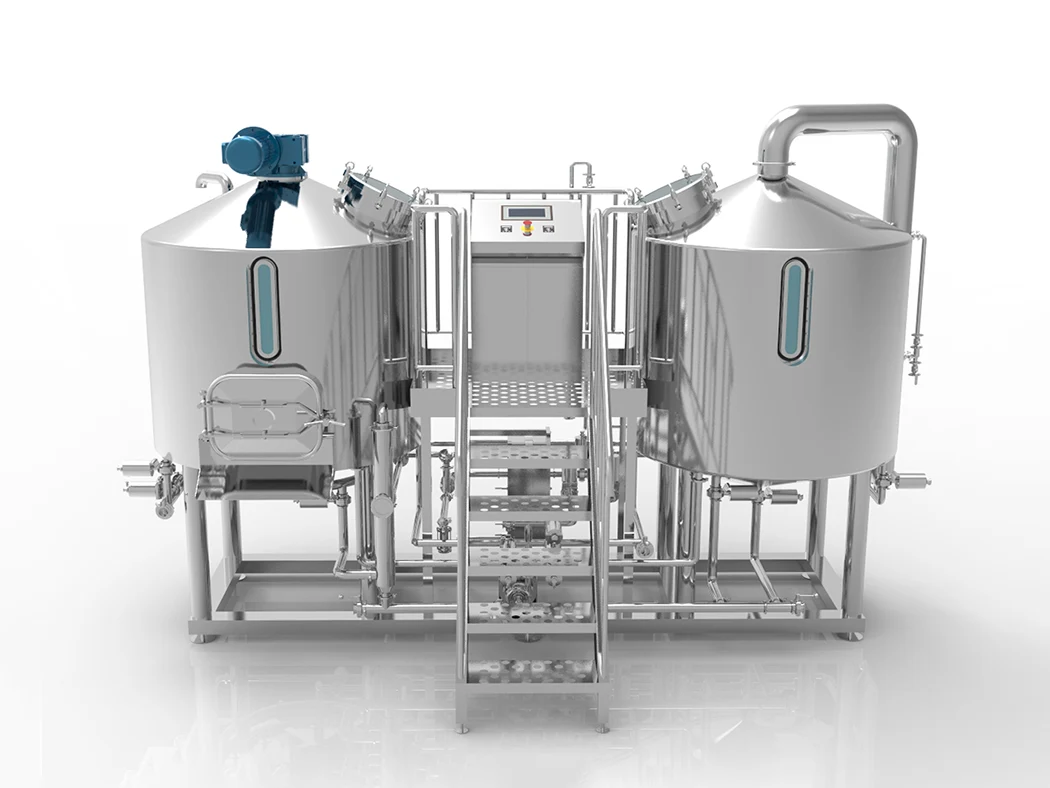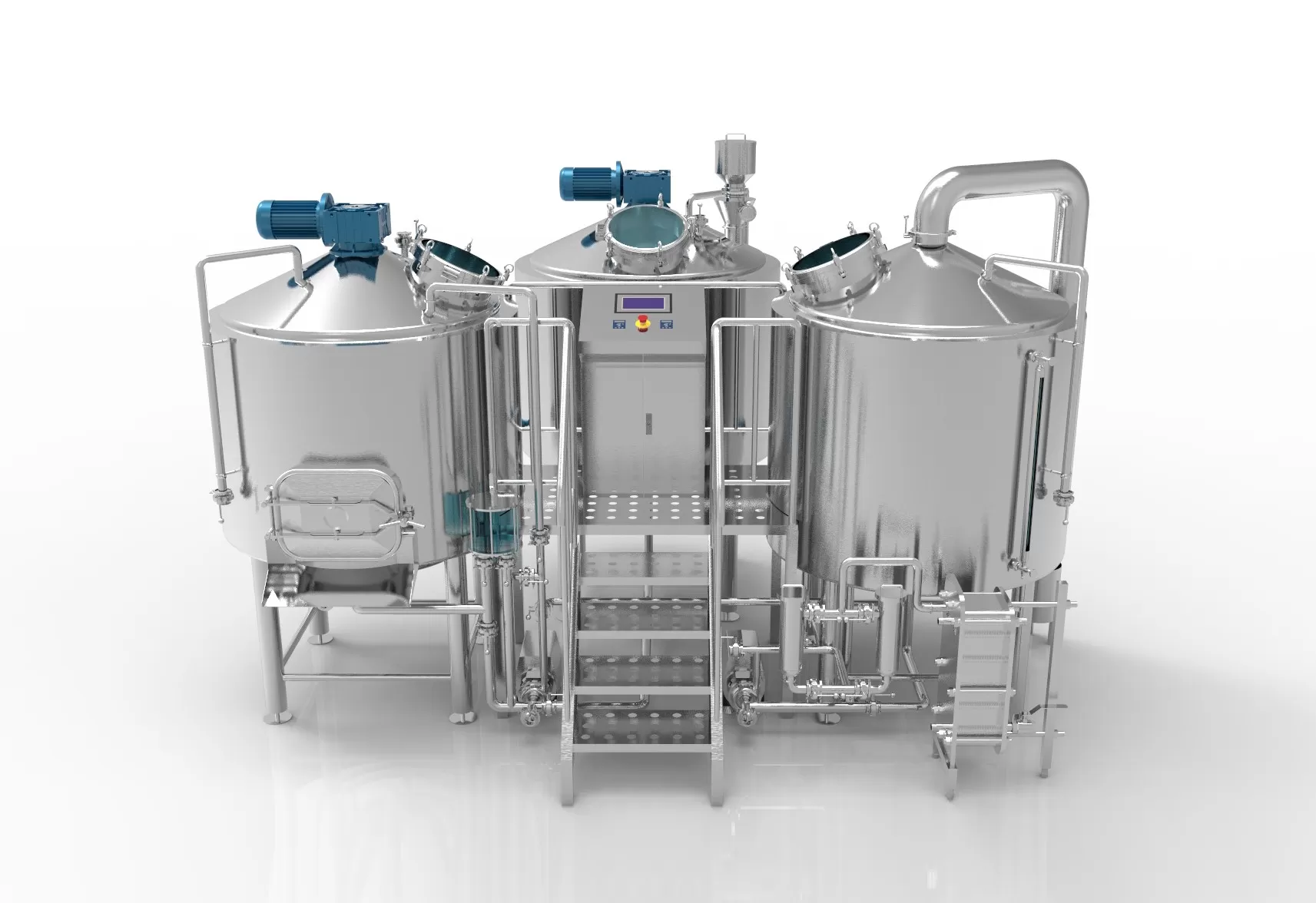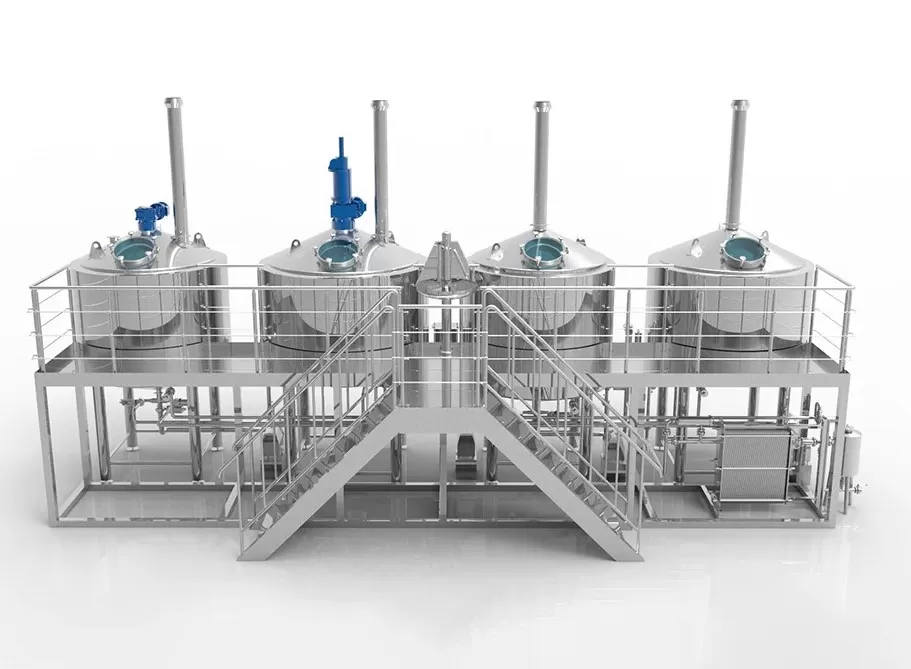Struggling with inconsistent beer quality or difficult-to-clean brewing vessels? Poor fermentation control can ruin batches, waste ingredients, and hurt your brewery’s reputation. You need reliable equipment that ensures perfect fermentation every time, supporting your craft and your business growth.
Stainless steel fermentation tanks are specialized vessels, primarily made from food-grade stainless steel (like 304 or 316), designed to provide a controlled, sanitary environment for the fermentation process. They are crucial in brewing, winemaking, and other beverage production, converting sugars into alcohol and CO2 while allowing for precise temperature management, easy cleaning (CIP), and often, yeast harvesting. This makes the cuba de fermentação the heart of consistent quality beverage production.
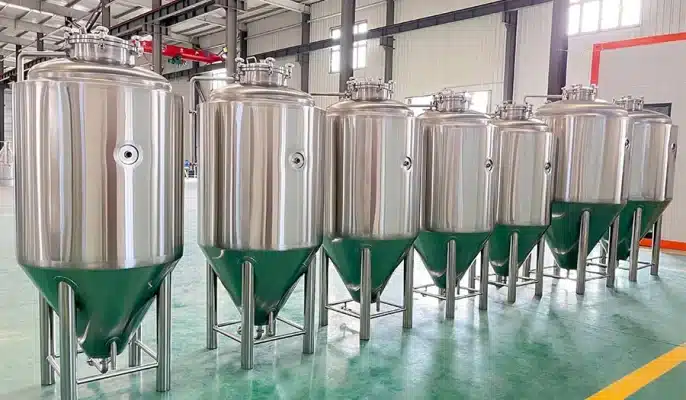
What Exactly Are Stainless Steel Fermentation Tanks?
Como Equipamento de fabrico de cerveja Instalação de fabrico, we see cubas de fermentação em aço inoxidável as more than just containers; they are precision instruments vital for crafting exceptional beverages. These specialized tanques are engineered specifically for the processo de fermentação, the magical stage where yeast converts sugars (from mosto in beer fabrico de cerveja, or juice in vinificação) into alcohol and carbon dioxide. Typically constructed from high-quality, grade stainless steel (often 304 aço inoxidável or 316 for enhanced corrosion resistance), these tanks are designed to offer a perfectly sanitário environment. This is crucial because any contamination can drastically alter the final product’s flavor and stability.
The design of a cuba de fermentação goes beyond simple containment. Features often include:
-
Cónico bottoms for easy yeast collection.
-
Revestido walls for precise temperature control.
-
Pressure relief valves for safety.
-
Sampling ports for quality checks.
-
CIP (Clean-In-Place) systems for efficient cleaning.
These tanks ensure that the delicate fermentação environment is meticulously managed. Whether you’re dealing with a small startup cervejaria or a large-scale commercial operation, the right cuba de fermentação is fundamental. It’s the vessel where raw ingredients transform into the final beverage, making its quality and functionality paramount for any serious cervejeiro or beverage producer. These tanques are truly the workhorses of the cervejaria.
Why is Stainless Steel the Preferred Material for Brewery Tanks?
The dominance of aço inoxidável in the fabrico de cerveja industry, especially for cubas de fermentação e brewery tanks, isn’t accidental. Its properties make it uniquely suited for the demands of beverage production.
Key Advantages of Stainless Steel:
-
Durability & Corrosion Resistance: This is vital when dealing with acidic liquids like beer or wine, ensuring the tanque itself doesn’t impart unwanted flavors or degrade over time. As manufacturers, we prioritize longevity and product integrity, and aço inoxidável delivers.
-
Cleanliness & Sanitation: The non-porous surface of aço inoxidável is exceptionally easy to clean and sanitize. Maintaining a sanitário environment is non-negotiable during fermentação. Smooth surfaces, often with seamless TIG welds, and compatibility with high-temperature cleaning and CIP systems reduce contamination risk, leading to consistent quality.
-
Inertness: Aço inoxidável won’t react with the beverage, preserving the intended flavor profile created by the cervejeiro.
-
Strength: Allows tanques to handle pressure during carbonatação or transfers, making it ideal for everything from small fermentadores to massive tanques de armazenamento in a tank farm.
These factors combine to make aço inoxidável the undisputed champion material for modern equipamento para cervejarias.
What Are the Different Types of Fermentation Tanks Available?
The world of cubas de fermentação isn’t one-size-fits-all. Different beverages and fabrico de cerveja styles often benefit from specific tanque designs. As experts in equipamento de processamento, we manufacture various types tailored to diverse needs:
| Tipo de depósito | Primary Use | Características principais | Melhor para |
| Cylindroconical (CCT) | Primary Fermentation, Conditioning, Carbonation | Cónico bottom, often jacketed, pressure-rated, CIP compatible | Most modern beers (ales & lagers), yeast harvesting |
| Tanque Brite | Clarification, Maturation, Carbonation, Serving | Revestido, pressure-rated, carbonatação stone port, sight glass | Conditioning, carbonating, packaging prep, serving directly |
| Fermentador aberto | Fermentação primária | Tampo aberto, allows top-cropping yeast | Certain traditional ales (Hefeweizen, Belgian styles), requires clean room |
| Variable Capacity Tank | Fermentation, Storage (variable volumes) | Floating lid adjusts to liquid level | Vinificação, small batches, minimizing oxidation |
| Horizontal Lager Tank | Lagering (cold conditioning) | Horizontal orientation, jacketed | Extended cold storage, traditional lagering |
| Stackable Fermenter/Tank | Fermentation/Storage | Designed for vertical stacking | Breweries with limited floor space |
Understanding these different types of fermentation vessels helps breweries select the right equipamento de processamento for their specific needs and desired outcomes. The fermentador cónico remains the most versatile for many cervejarias.
How Does a Conical Fermenter Revolutionize the Brewing Process?
The introduction of the fermentador cónico (or CCT) truly transformed modern brewing operations. Its ingenious design offers several advantages that streamline production and enhance beer quality. The most significant benefit comes from the cone-shaped bottom. This shape allows yeast and sedimento (trub) to settle compactly at the bottom of the tanque. A dump valve at the apex of the cone lets the cervejeiro easily remove this trub without disturbing the beer above, leading to clearer beer and reducing the need for filtering.
Furthermore, this same valve allows for yeast harvesting. Healthy yeast collected from the cone can be repitched into subsequent batches, saving costs and potentially maintaining unique house yeast characteristics. Many fermentadores cónicos are also pressure-rated and equipped with camisas de refrigeração. This means:
-
Primary fermentação
-
Secondary fermentação (maturation/lagering)
-
Carbonatação
…can potentially occur within the same tanque. This minimizes transfers, reducing the risk of oxidation and contamination each time you move beer. For any cervejaria looking to improve efficiency and consistency, investing in high-quality Tanque de fermentação e tanques de brilho em aço inoxidável is a game-changer. The fermentador cónico combines multiple steps into one efficient, sanitário single vessel.
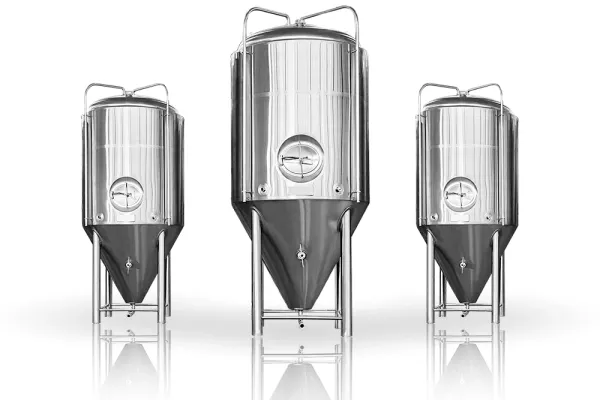
What Role Do Brite Tanks Play in Beer Production?
Tanques de luz, sometimes called bright beer tanques or conditioning tanques, play a critical role in the final stages of beer production, bridging the gap between fermentação and packaging. While the primary fermentação happens in fermentadores (often fermentadores cónicos), the tanque brite is where the beer matures, clarifies, and gets carbonated. Think of it as the finishing vessel that prepares the beer for serving or sale. Its name comes from the “bright” (clear) beer that results from the processes within it.
After the bulk of the yeast and sedimento has been removed post-fermentation, the beer is transferred to a tanque brite. Here, it can be chilled using the tank’s cooling jacket to encourage further clarification – proteins and remaining yeast settle out, resulting in a clearer product. Crucially, tanques brite are pressure-rated, allowing brewers to force-carbonate the beer to precise levels by injecting CO2. Facto: Maintaining a specific carbonation level (e.g., 2.5 volumes of CO2) is essential for the desired mouthfeel and appearance of most beer styles. This controlled carbonatação ensures consistency. The tanque brite also serves as a holding tanque before packaging, ensuring consistent quality across the entire batch. These tanks maintain the beer at the correct serving temperature and carbonatação level, making them essential for brewpubs serving directly from tanques and for packaging lines. They are indispensable brewery tanks for achieving polished, market-ready cerveja artesanal.
Can Stainless Steel Tanks Be Used for Winemaking and Other Beverages?
Absolutely! While heavily associated with fabrico de cerveja, reservatórios de aço inoxidável are incredibly versatile and widely used in vinificação, cider production, kombucha brewing, distilling, and even the broader alimentos e bebidas industry. The same properties that make them ideal for beer – inertness, durability, ease of cleaning, and controle de temperatura capabilities – are highly valued across these sectors. In vinificação, cubas de fermentação em aço inoxidável offer precise temperature regulation, which is crucial for managing fermentation temperatures and preserving delicate aromas. Both open top and closed reservatórios de aço inoxidável are used, sometimes with cooling coils or jackets, depending on the desired wine style. You can explore specialized Tanques de Fermentação de Vinho Premium e Soluções de Equipamento para Adegas designed specifically for these needs.
For kombucha, reservatórios de aço inoxidável provide a sanitário environment resistant to the acidic nature of the brew. Distillers use aço inoxidável for mash tanques, fermentadores, and storage, valuing its neutrality and robustness. Even beyond alcoholic beverages, industries use reservatórios de aço inoxidável for mixing, holding, and processing various liquids. We even manufacture specialized TANQUES DE MISTURA for diverse applications. The adaptability and reliability of reservatórios de aço inoxidável make them a cornerstone of modern beverage and liquid equipamento de processamento, far beyond just the cervejaria. We offer tanks available in various sizes to suit any production scale.
How Important is Temperature Control in Fermentation Tanks?
Controlo da temperatura during fermentação is arguably one of the most critical factors influencing the final character of beer, wine, or any fermented beverage. Yeast activity is highly sensitive to temperature; different temperatures encourage the production of different flavor compounds (esters, fusel alcohols). Industry data suggests that even a 1-2°C (2-4°F) deviation from the target fermentation temperature can significantly alter the flavor profile of many beers. Therefore, having precise temperature control in your cubas de fermentação is paramount for consistency and quality.
A maioria dos modernos cubas de fermentação em aço inoxidável, especially fermentadores cónicos e tanques brite, incorporate camisas de refrigeração. These are double-walled sections on the tanque body (and sometimes the cone) through which a coolant (like glycol) circulates. Connected to a chiller system, these casacos allow brewers to precisely regulate the temperatura de fermentação, raising or lowering it as needed for different yeast strains and stages of fermentação (e.g., diacetyl rest, cold crashing). This temperature regulation ensures yeast performs optimally, producing the desired flavor profile and minimizing stress. Consistent fermentation temperatures lead to consistent batches, a hallmark of professional fabrico de cerveja. Without effective cooling systems integrated into the tanque design, achieving repeatable, high-quality results is significantly more challenging. The casaco is a key feature of a quality cuba de fermentação.
What Features Should You Look for in High-Quality Brewing Tanks?
When investing in brewing tanks, whether they are fermentadores, tanques brite, ou tanques de armazenamento, several features indicate quality and good design, ensuring they serve your cervejaria well for years to come. As manufacturers, we focus on these key aspects:
-
Material Quality: Always opt for food-grade stainless steel, typically aço inoxidável 304 or 316L. Ensure the steel thickness is appropriate for the tanque size and pressure rating.
-
Weld Quality: Look for smooth, sanitário welds, preferably TIG welded and polished internally to <0.6µm Ra. Poor welds can harbor bacteria. Laser-welded jackets often indicate advanced manufacturing.
-
Cooling Jacket Efficiency: Ensure the cooling jacket offers sufficient surface area coverage (often 30-50% of the sidewall) for efficient cooling e precise temperature control. Dimpled jackets are common and effective.
-
Sanitary Fittings and Design: All ports, valves, and connections should be sanitário tri-clamp or DIN fittings for easy disassembly and cleaning. The interior should be smooth with rounded corners, and potentially a sloped bottom (in non-conical tanks) for drainage. Look for features facilitating CIP systems (e.g., rotating spray ball).
-
Pressure Rating: Ensure the tanque (especialmente tanques brite and unitanks) is certified for the pressure required (e.g., 15 PSI / 1 Bar working pressure, 30 PSI / 2 Bar test pressure). A reliable Pressure Relief Valve (PRV) is essential safety equipamento.
-
Useful Ports: Consider the number and placement of ports for temperature probes (thermowells), sampling, carbonatação stones, racking arms (like a Speidel design feature allowing clear liquid withdrawal above the sedimento), and CIP spray balls. A rotating rack arm is highly beneficial.
-
Manway Access: Ensure the manway (top or side, shadowless designs preferred) provides adequate access for inspection and manual cleaning if needed, while sealing properly under pressure.
-
Personalização: Can the tanque be tailored to meet your specific cervejaria layout, height-to-diameter ratio preferences, or process technology needs?
Investing in well-designed tanques with these features will pay dividends in terms of ease of use, cleaning efficiency, energy consumption, and ultimately, the quality and consistency of your beverages. Don’t forget to check for essential Peças para cervejarias and fittings compatibility.
How Do You Maintain and Clean Stainless Steel Fermentation Tanks?
Maintaining the cleanliness and integrity of your cubas de fermentação em aço inoxidável is crucial for preventing contamination and ensuring longevity. Fortunately, stainless steel’s properties make this relatively straightforward, especially with tanks designed for easy cleaning. The standard procedure involves a Clean-In-Place (CIP) system, which minimizes manual labor and ensures thorough cleaning.
A Typical CIP Cycle:
-
Pre-rinse: Flush the tanque with ambient water to remove loose soil and residues.
-
Caustic Wash: Circulate a hot (e.g., 60-80°C / 140-176°F) alkaline detergent (1-3% caustic soda based) through the CIP spray ball for 20-30 minutes. This breaks down organic matter.
-
Intermediate Rinse: Thoroughly rinse with water to remove the caustic solution. Check pH to ensure neutrality.
-
Acid Wash (Periodic): Circulate an acid solution (e.g., 0.5-1.5% phosphoric/nitric blend) at ambient or slightly elevated temperature for 15-20 minutes to remove mineral scale (beerstone) and passivate the aço inoxidável. This might be done weekly or monthly depending on water hardness and usage.
-
Final Rinse: Rinse thoroughly with potable water until all cleaning agents are removed (check pH/conductivity).
-
Sanitizing: Just before filling the tanque com mosto or beverage, circulate a no-rinse sanitizer (like PAA – Peracetic Acid at recommended concentration) for the required contact time (often 5-15 minutes). This step is critical for a sanitary fermentation.
Regular visual inspection of the tanque interior, welds, and gaskets is also important. Proper maintenance ensures your reservatórios de aço inoxidável remain in optimal condition, providing the ideal environment para fermentação batch after batch. Tanks ensure quality when properly maintained.
Choosing the Right Size and Configuration for Your Brewery’s Tanks?
Selecting the appropriate size and configuration for your fermentação e tanques brite is a critical decision impacting workflow, production capacity, and efficiency. It’s not just about volume; the number of tanques and their specific features matter immensely. For startups, a versatile Sistema de Cervejaria de Pequenos Lotes de 300L might be ideal, offering flexibility. As you grow, needs evolve.
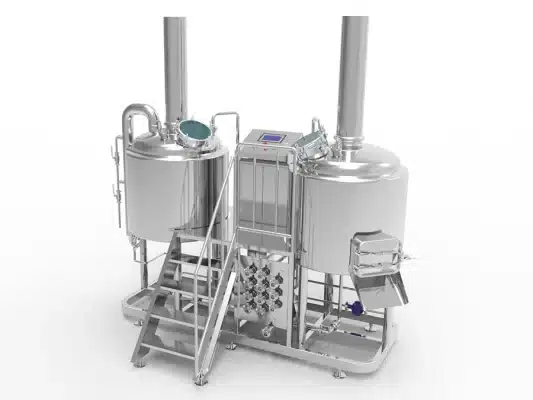
Key Considerations:
-
Brewhouse Match: Fermentadores are often sized as multiples of the brewhouse batch size (e.g., a 10 BBL brewhouse might use 10 BBL, 20 BBL, or even 40 BBL fermentadores). Double or quadruple-sized tanques allow for multiple brews into one fermentador.
-
Turnaround Time: Consider how long each batch will occupy a tanque. Ales ferment faster than lagers. Longer lagering times require more tanque capacidade.
-
Sales Velocity & Mix: How quickly does your product sell? Do you need many different beers available simultaneously (requiring more, smaller tanques) or larger volumes of fewer beers (requiring fewer, large tanks)?
-
Number of Tanks: A common starting point is having 4-6 fermentadores and 1-2 tanques brite per brewhouse. This allows for a continuous brewing cycle.
-
Physical Space: Measure cellar height and floor space accurately. This dictates allowable tanque diameter and height (height-to-diameter ratio), potentially influencing fermentação dynamics and requiring choices like stackable tanques.
-
Future Growth: Plan for expansion. Investing in slightly large tanks or ensuring space for additional equipment can be more cost-effective long-term.
Whether you need compact 60L vessels for pilot batches or vast large tanks for a regional cervejaria, careful planning involving these factors is essential.
Partnering with a Manufacturer for Custom Brewery Tanks and Processing Equipment
Choosing the right supplier for your brewery tanks is as crucial as choosing the tanques themselves. You need a partner who understands the nuances of fabrico de cerveja and beverage production, offering not just tanks but also comprehensive support. As an experienced Equipamento de fabrico de cerveja Instalação de fabrico, we pride ourselves on providing high-quality, customizable solutions tailored to meet the unique needs of each client – from startup cervejaria owners to established vinificação operations and diverse beverage entrepreneurs.
We offer a wide range of reservatórios de aço inoxidável, including fermentadores cónicos, tanques brite, tanques de armazenamento, wine tanks, and specialized equipamento de processamento. Our tanks feature robust construction, sanitário design, efficient camisas de refrigeração, and adherence to stringent quality standards (e.g., ASME pressure vessel certification if required). We understand that every cervejaria is different, so we work closely with you to configure tanques that fit your space, process, and budget. Beyond the hardware, we provide:
-
Detailed design consultations.
-
Technical expertise and drawings.
-
Installation support options.
-
Responsive after-sales service.
Ensuring your brewing operations run smoothly is our priority. Whether you’re looking for a single fermentador or a complete turnkey Sistema de fabricação de cerveja 1000L, partnering with a knowledgeable and reliable manufacturer ensures you receive exceptional quality equipment built for performance and longevity. Let us help you build the heart of your cervejaria.
Perguntas mais frequentes (FAQs)
What is the difference between a fermenter and a brite tank?
A fermentador (often a fermentador cónico) is primarily used for the main fermentação process where yeast converts sugars to alcohol. A tanque brite is used after primary fermentação for clarifying, carbonating, maturing, and holding the beverage before packaging. Fermentadores handle the biological transformation, while tanques brite handle finishing.
Why are conical bottoms preferred for beer fermentation tanks?
Conical bottoms allow yeast and sedimento (trub) to collect compactly at the lowest point of the tanque. This makes it easy to harvest yeast for reuse and to remove trub, resulting in clearer beer without needing to rack the entire volume off the sedimento. This design greatly improves efficiency and beer clarity in the cuba de fermentação.
How often do stainless steel brewery tanks need to be replaced?
High-quality reservatórios de aço inoxidável, when properly maintained and cleaned, can last for decades (20-30 years or more is common). Aço inoxidável is extremely durable and resistant to corrosion. Replacement is typically due to expansion needs, desire for updated technology (e.g., more efficient camisas de refrigeração), or in rare cases, damage. Their longevity makes them a sound long-term investment for any cervejaria.
Can I use one tank for both fermentation and carbonation?
Sim, tanques known as “unitanks” are designed for this. These are typically fermentadores cónicos that are pressure-rated (usually to at least 1 Bar/15 PSI) and equipped with features like camisas de refrigeração e carbonatação stones. Using a unitank allows primary fermentação, secondary fermentação (conditioning/lagering), and carbonatação to occur in a single vessel, reducing transfers and potential oxidation.
What is passivation and why is it important for stainless steel tanks?
Passivation is a chemical process (often involving an acid wash, typically nitric or citric acid based) that removes free iron from the surface of aço inoxidável and helps form a thicker, more uniform protective chromium oxide layer. This passive layer significantly enhances the tank’s resistance to corrosion, ensuring longevity and preventing metallic flavors from leaching into the beverage. It’s a crucial step, especially after fabrication or welding, in maintaining reservatórios de aço inoxidável.
Are there alternatives to stainless steel for fermentation tanks?
While aço inoxidável is dominant in professional settings, alternatives exist. Plastic (HDPE) fermentadores are common in fabricação caseira and some nano-breweries due to lower initial cost, but can be prone to scratching (harboring bacteria) and are more permeable to oxygen. Wood tanks (foeders) are used for specific aging and sour beer programs to impart unique flavors but are much harder to clean and maintain sanitário conditions. For professional, consistent production requiring durability and sanitation, reservatórios de aço inoxidável remain the industry standard.
Key Takeaways for Stainless Steel Fermentation Tanks
-
Questões materiais: Aço inoxidável (304 or 316) is the standard for durability, cleanability, and product safety.
-
Types Serve Purposes: Escolher Fermentadores cónicos for versatility, Tanques de luz for finishing, and others based on specific needs (lagering, vinificação).
-
Temperature is Crucial: Controlo preciso da temperatura via camisas de refrigeração is non-negotiable for quality and consistency.
-
Quality Features: Prioritize sanitário design, good welds, efficient arrefecimento, proper pressure ratings, and well-placed ports.
-
Cleaning is Key: Implement a robust CIP regime (rinse, caustic, rinse, acid, rinse, sanitize) for tanque health and product safety.
-
Size and Configuration: Plan tanque volume and quantity based on brewhouse size, production cycle, sales, and space.
-
Choose Your Partner Wisely: Select a manufacturer offering quality equipamento para cervejarias, customization options, and reliable support.

